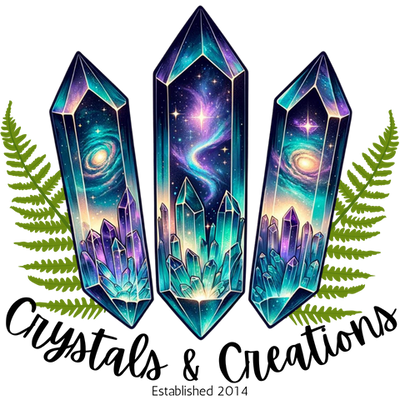
Ten Things Everyone Should Know About Crystals
There are so many things to learn about Crystals but here are ten to get you started!
- They emit their own frequencies! Quartz has long been used in technology for its ability to emit such a regular frequency when stimulated.
- They have the most orderly atomic structure in nature which results in the slowest rate of entropy (the rate at which things break down).
- There are so many kinds of Quartz but the most common ones are Clear, Rose, Amethyst, Citrine, and Smokey. Quartz changes color when there are other minerals present while it grows.
- Speaking of Citrine, did you know that most Citrine being sold on the market today is actually Amethyst that has been treated in a lab at high temperatures? Does that make it less desirable? No way! It brings down the price significantly (natural Citrine is often a more greenish yellow color and is pretty expensive) while still resonating with the lower Chakras and promoting abundance and motivation. Heat treated Citrine can often easily be identified by its white base that fades into golden yellow or orange (natural Citrine is about the same color through and through).

- Many Crystals are treated with heat to intensify their color. This isn’t a bad thing, it just is what it is.
- Each Crystal resonates with at least one Chakra. This means that the frequency that it emits matches the frequency of that Chakra. When they interact (for example, Red Jasper with the Root Chakra), the Crystal’s regularly oscillating frequencies can gently pull yours back into alignment. This is the basis of some Crystal healing.
- Crystals aren’t just great for the energy body, they are also great for the home! Simply placing Crystals around your space is a great way to encourage good vibes. Pair them with cleansing Herbs or Essential Oils for an extra boost!
- Crystals can be identified using the Moh’s Hardness Scale. This scale goes from 1 (talc being the softest) to 10 (Diamonds being the hardest) and it’s actually pretty simple to use. Each stone that is higher on the scale can scratch any of the ones below. For example, Quartz is a 7 and Fluorite is a 4. So Quartz can scratch Fluorite but Fluorite cannot scratch Quartz. The scale also ranks household items like a fingernail and glass so that you can even check to see if your new stone is glass (a common material used to make fake Crystals).

- Fake Crystals can also be identified using some easier factors. If you see a Fluorite tower, for example, for sale in many shops for approximately $20 but see it in a shop for $2, it might be fake. Ask the shop owner for details. Aside from price, you can also go off color- if you see a strangely vibrant ‘natural’ Citrine for just a few dollars, it could be colored glass or heat treated Amethyst. The most common Crystals I see on the market that look like they could be glass are the towers and other polished shapes (skulls, etc). If a price seems too good to be true, ask the shop owner for more details. Be sure to check out their reviews too. Colored glass is pretty but its atomic structure is a mess which makes it unpredictable for energy work. Opalite and Cat’s Eye are not Crystals, but actually glass. This is why you can find both for pretty inexpensive prices.
- Aura/Titanium Crystals are genuine Crystals that have been treated in a vacuum chamber with layers of precious metals like platinum, gold, silver, etc. Each metal produces a different rainbow pallet. These beauties don’t generally come cheap but they are worth it! Their new rainbows mean they interact with your entire energy system and promote the same awesome qualities as Quartz but with new added features!
Are you ready to take your Crystal healing journey to the next level and step into alignment with your true self?? Check out my workshops by clicking here.



